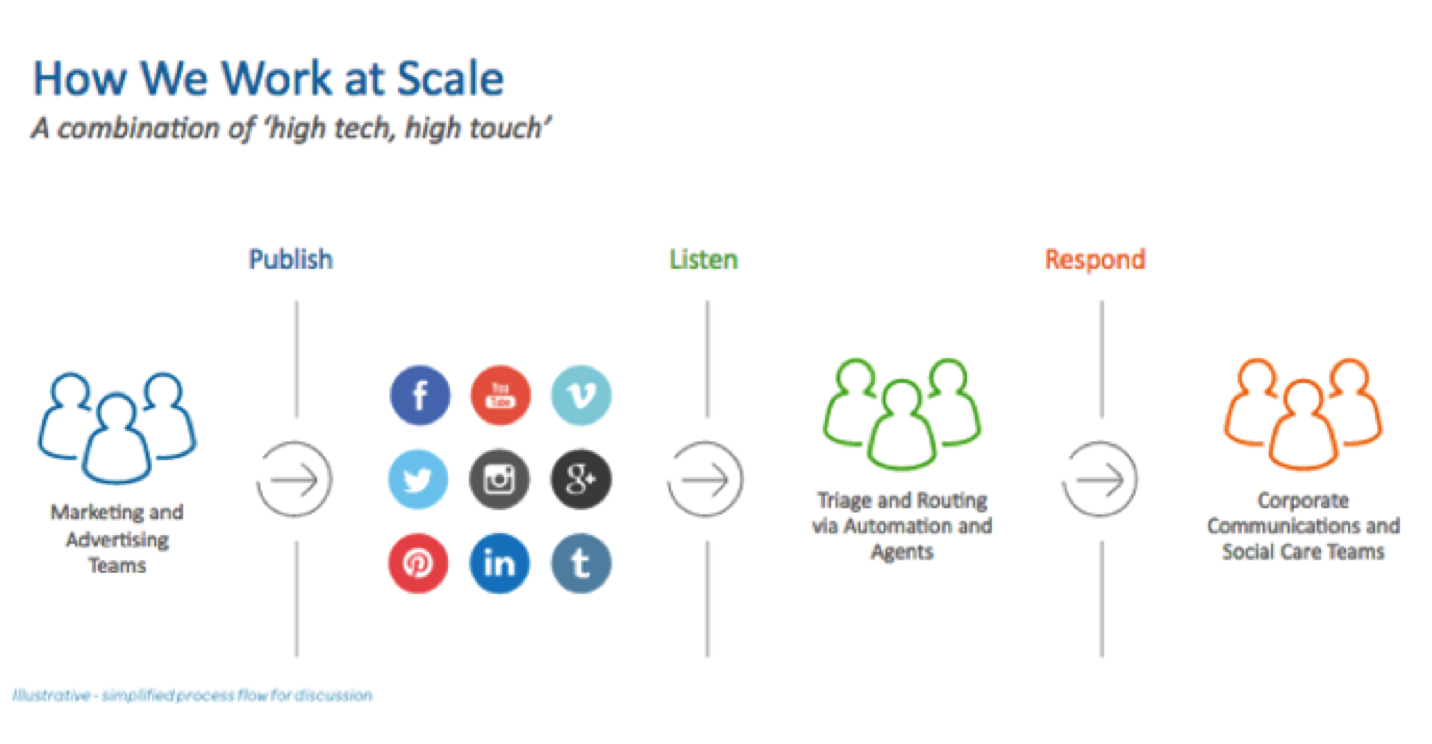
Get your FREE 30-day trial.
Please complete all fields.
When reflecting on the innovations of the American Telephone and Telegraph Company, Alexander Graham Bell said it was the result of ‘the cooperation of many minds.’ Although he would hardly recognize the company in its present form, his belief perfectly captures AT&T’s modern-day strategy for social customer care.
As of 2Q2015, AT&T has become a $166 billion multinational communications leader, helping people and businesses connect with advanced next-generation TV, mobile services, and high-speed Internet. With its recent acquisition of DIRECTV, AT&T is the world’s largest pay TV provider. The company now has 132 million wireless customers, 45 million video customers, and 16 million Internet customers. Mr. Bell would most certainly be proud.
With so many consumers and businesses relying on AT&T, delivering exceptional service at scale is a top priority. However, the company must do so with a key trend in mind: Customers now prefer digital channels for problem resolution.
Kim Keating, Assistant Vice President, Digital Care Strategy at AT&T, points out that the growing requirement for digital service—especially social customer care—is to be expected.
“Our customers demand ‘anywhere, anytime, any device’ connectivity from AT&T, and they have that same expectation when they have a question or issue. In fact, 76% of wireless customers now prefer to resolve issues through digital channels. In response, we’ve set a goal of handling 80% of all customer transactions via digital by 2020,” she explains.
To achieve its objective, AT&T has a centralized social media team that works with six different business units across the organization (like Tech Support, Corporate Communications, etc.). The team is chartered with helping every customer have a positive experience on social, as well as chat and other emerging channels.

Each month, nearly 1 million AT&T-related conversations are posted on Facebook and Twitter alone. It’s up to the social media team to monitor these as well as other social media networks, identify comments that require a response, and then ensure they are addressed to each customer’s satisfaction. Actionable posts are converted into cases and routed to an appropriate subject matter expert for resolution.
“Without the ability to automatically identify conversations and route them for resolution, we would never be able to handle the volume and deliver the experience our customers want and expect,” says Keating.
AT&T has seen incredible benefits from the social care strategy. Perhaps more importantly, the company’s customers have as well
Keating says, “By streamlining our workflows, we’re able to engage and respond much more quickly and effectively. Our response times are down 70% year-over-year. That was accomplished without increasing the social team, which demonstrates the value of designing an efficient social operating model.”
Meanwhile, social service costs have dropped 35%. What’s even more amazing is that it was achieved without sacrificing customer satisfaction.
“As our response times and costs have declined, our customer satisfaction has risen by 5% year-over-year. While that may not sound like much on the surface, it’s a testament to the role of our technology and processes. We’ve always had the best social support team in the industry. It’s the other things we’re doing that is driving up satisfaction.”

One of the key’s to AT&T’s digital-care success is the recognition that social does not belong to any one department. It truly is the face of the company, and everyone must play a role—from marketing to service and all points in between.
“Social is growing too fast to be handled in a silo—we wouldn’t be successful without close collaboration. Having a shared vision and cross-departmental workflows to support publishing, listening and engagement provide the framework to achieve our collective goals,” Keating concludes.
Are you interested in learning how you can leverage social customer care to decrease response times, lower costs, and improve customer satisfaction? Check out this free report from Gartner: How to Manage Social Media Engagements for Customer Service.
Matthew Hutchison is a Senior Director of Product Marketing at Salesforce. He’s a frequent contributor to blogs where he shares his passion for digital marketing and customer journey management. You can follow him on Twitter @gethutch